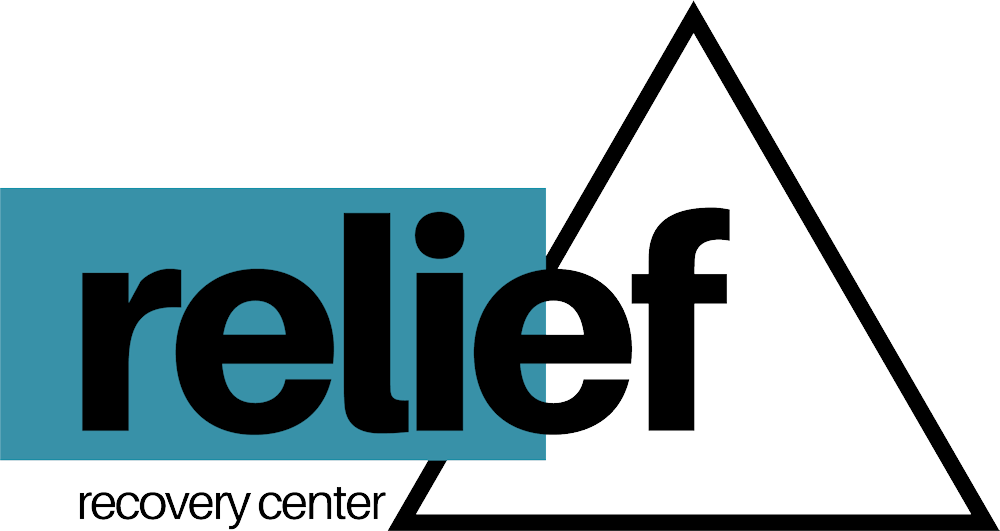The emergence of the opioid crisis has sent shockwaves through modern society, unearthing the devastating consequences of prescription drug misuse. Amidst this backdrop, television series such as “Dopesick” and the recently released “Painkiller” have risen to prominence, shining a piercing spotlight on this pressing issue. From the perspectives of rehabilitation, recovery, and the pharmaceutical industry’s role, these shows serve as powerful catalysts for awareness, education, and change.
In this comprehensive exploration, we delve into how “Dopesick” and “Painkiller” collectively raise awareness about prescription drug misuse, its dire repercussions, and the lessons they hold for regular people.
Before We Dive In, A Brief Historical Overview: The Birth of OxyContin: A Pill That Changed Everything
At the heart of the opioid crisis lies a single pill that played a pivotal role in shaping the landscape of prescription drug misuse: OxyContin. Introduced as a revolutionary pain management solution, OxyContin became a powerful force that would inadvertently contribute to an unprecedented public health crisis. To fully understand the impact of television series like “Dopesick” and “Painkiller,” it’s essential to delve into the history of OxyContin and its transformation from medical breakthrough to catalyst for addiction.
A Breakthrough in Pain Management
OxyContin was first introduced to the market in 1996 by Purdue Pharma, a pharmaceutical company based in Stamford, Connecticut. Marketed as a game-changer in pain management, OxyContin contained a time-release mechanism that allowed for a slow and steady release of the active ingredient, oxycodone, over a 12-hour period. This extended-release feature was believed to reduce the risk of addiction, making OxyContin an attractive option for patients dealing with chronic pain.
A Perfect Storm of Misunderstanding
Initially, OxyContin was hailed as a breakthrough medication, offering relief to individuals suffering from severe pain. However, a convergence of factors contributed to its eventual misuse. The medical community’s limited understanding of the potential for addiction, combined with aggressive marketing tactics by Purdue Pharma, created a perfect storm. Healthcare professionals began prescribing OxyContin for a range of pain conditions, often without realizing the risk that accompanied its use.
The Opioid Crisis Unfolds
As prescriptions for OxyContin surged, so did its misuse. Patients who genuinely needed pain relief found themselves ensnared by its potent effects, while others began experimenting with the drug recreationally. The extended-release mechanism was easily defeated by crushing the pills, allowing users to bypass its time-release properties and experience an intense euphoria. This marked the beginning of a crisis that would go on to devastate countless lives.
Media and Legal Scrutiny
The dark side of OxyContin’s rise became increasingly evident as addiction rates skyrocketed. Media outlets started reporting on the alarming increase in opioid-related deaths and the communities ravaged by addiction. Legal action followed, with Purdue Pharma facing lawsuits for its aggressive marketing practices and downplaying the drug’s addictive potential. These events further fueled public awareness of the dangers posed by prescription opioids.
A Cautionary Tale
The history of OxyContin serves as a cautionary tale about the unintended consequences that can arise when potent medications are misunderstood and misused. The proliferation of opioid addiction and the staggering toll it took on families and communities became a grim reality that demanded attention. Television series like “Dopesick” and “Painkiller” shine a light on the roots of this crisis, offering viewers an opportunity to comprehend the evolution of OxyContin from medical marvel to a symbol of a healthcare system gone awry.
“Dopesick”: Portraying the Underbelly of the Opioid
Epidemic “Dopesick” stands as an unapologetic mirror to the opioid crisis, capturing its visceral impact through layered characters and intersecting narratives. This series undresses the façade of prescription drug misuse, from its initial promise of pain relief to its haunting descent into addiction. It offers an intimate and emotional view of the consequences that unsuspecting individuals and families face.
“These pills are doing something really weird to my body. But the pain is gone, so it’s worth it, right?” – Character in “Dopesick”
“Painkiller”: A Fresh Perspective on the Crisis
The recently released series “Painkiller” adds a new layer of complexity to the narrative. By focusing on the role of the pharmaceutical industry in fueling the opioid epidemic, it broadens our understanding of the crisis. Through a tense exploration of corporate decisions and ethical dilemmas, the show confronts viewers with the uncomfortable truth about profit-driven motives.
“What we’re doing here is about medicine. It’s about helping people.” – Character in “Painkiller”
“Painkiller”: A Family’s Descent
The television series “Painkiller” doesn’t just illuminate the broader issues surrounding the opioid crisis—it zeroes in on the intimate and harrowing story of a single family’s unraveling. Through the lens of a husband, father, and small business owner, the show paints a poignant portrait of a seemingly idyllic life turned upside down by prescription drug misuse. This deeply personal narrative provides a fresh perspective on the crisis, shedding light on the journey from a wholesome, happy existence to the abyss of addiction.
At the heart of “Painkiller” is a family whose life embodies the American dream. A devoted husband, loving father, and hardworking small business owner, the protagonist stands as a symbol of success and stability. However, fate takes a sharp turn when an unfortunate accident plunges him into the throes of excruciating pain. Seeking relief, he turns to prescription oxycontin, a seemingly innocuous solution that promises to alleviate his suffering.
As the protagonist’s pain subsides, he finds himself ensnared by a new and unexpected affliction: addiction. The allure of oxycontin’s euphoric effects becomes impossible to resist, and what begins as a legitimate medical need morphs into a perilous habit. Slowly but steadily, his world unravels as he descends into a cycle of dependency and despair. The show doesn’t shy away from the grim realities of addiction, depicting the protagonist’s gradual transformation from a responsible family man to a shadow of his former self.
“Painkiller” masterfully interweaves this family’s personal tragedy with the broader societal crisis. By humanizing the protagonist’s struggles, the series underscores the fact that the opioid epidemic is not just a statistical anomaly—it’s a deeply human experience that can touch anyone. The show’s exploration of corporate decisions and ethical dilemmas adds layers of complexity, showcasing the fine line between medicine and profit-driven motives.
“What we’re doing here is about medicine. It’s about helping people.” This quote from the series encapsulates the tension at the heart of “Painkiller.” The show doesn’t merely point fingers; it engages viewers in a profound exploration of the multifaceted factors that contribute to the crisis. By delving into the motivations of pharmaceutical companies and healthcare professionals, “Painkiller” forces us to confront the uncomfortable truth that profit-driven decisions can have dire consequences for individuals and families.
As “Painkiller” unfolds, viewers bear witness to the protagonist’s agonizing journey through addiction. Yet, even in the darkest moments, the show hints at the possibility of redemption. The series serves as a poignant reminder that addiction doesn’t define a person’s entire story. It showcases the protagonist’s struggle to break free from the shackles of addiction, inspiring hope that even amidst despair, the human spirit can rise to the challenge of recovery.
Human Stories, Global Impact
Both “Dopesick” and “Painkiller” humanize the crisis, making it palpable and relatable. By skillfully weaving characters with relatable experiences, they present the opioid epidemic not as a distant issue, but as a stark reality faced by regular people. This approach underscores the urgency of the crisis and compels viewers to empathize with the individuals and families affected.
“Addiction is a disease. It’s not a crime.” – Character in “Dopesick”
Education as Empowerment
Educational initiatives form a cornerstone of both series. “Dopesick” educates viewers about the mechanics of addiction, while “Painkiller” delves into the mechanics of corporate decision-making. By offering insights into the various dimensions of the crisis, these shows empower viewers to make informed decisions about their health and advocate for change.
“The more I take, the better I feel. It’s a miracle drug.” – Character in “Dopesick”
Initiating Conversations and Raising Empathy
“Dopesick” and “Painkiller” are not mere dramas; they are conversation starters. These shows encourage society to engage in discussions about addiction, mental health, and the pharmaceutical industry’s role. By fostering empathy and understanding, they pave the way for open dialogues that can dismantle stigmas and lead to collective action.
“We don’t have to do this alone. We can help each other.” – Character in “Dopesick”
Redemption and Hope
Amidst the grim realities, both series illuminate the spark of hope. Characters in “Dopesick” and “Painkiller” showcase the journey of recovery and redemption, reminding viewers that change is possible, even in the face of seemingly insurmountable challenges. These stories of resilience inspire audiences to believe in the potential for healing and transformation.
“I messed up, but I’m not giving up.” – Character in “Dopesick”
“Dopesick” and “Painkiller” stand as twin pillars of awareness, empathy, and change in the realm of television. By tackling the opioid crisis from different angles, these series offer a multifaceted exploration of prescription drug misuse. Through their portrayals of addiction’s toll, the pharmaceutical industry’s culpability, and the power of recovery, they compel society to take action. These shows have the potential to not only ignite conversations, but to drive lasting transformation in attitudes, policies, and support systems surrounding addiction and recovery.
“Recovery isn’t about being perfect, it’s about progress.” – Character in “Dopesick”
A Legal Challenge and the Ongoing Purdue Pharma Lawsuit
Recent developments in the ongoing Purdue Pharma lawsuit have cast a spotlight on the legal battle surrounding the pharmaceutical company’s bankruptcy settlement. The U.S. Supreme Court’s decision to intervene in this matter adds a new layer of complexity to the intricate web of consequences stemming from OxyContin’s history. As the legal landscape evolves, the connection between prescription drug misuse and the accountability of pharmaceutical giants becomes all the more pronounced.
Supreme Court’s Intervention: The Details
The U.S. Supreme Court, in response to a challenge by President Joe Biden’s administration, has temporarily halted the Purdue Pharma bankruptcy settlement. This unprecedented move has put on hold an arrangement that aimed to shield the wealthy Sackler family, Purdue’s owners, from lawsuits linked to their role in the nation’s opioid epidemic. The Court’s decision involves pausing bankruptcy proceedings related to Purdue and its affiliates while the justices prepare to hold oral arguments in December as part of the administration’s appeal against a lower court’s ruling that upheld the settlement.
The Stakes and Implications
Under the terms of the Purdue Pharma bankruptcy settlement, the Sackler family, in exchange for paying up to $6 billion, would be granted immunity. This immunity was designed to resolve thousands of lawsuits brought against the company by states, hospitals, individuals affected by addiction, and others. These legal actions sought accountability for Purdue Pharma’s misleading marketing of the powerful pain medication OxyContin, which has played a role in fueling the opioid crisis.
A Divisive Issue: The Debate Over Legal Protections
The central issue at hand revolves around whether U.S. bankruptcy law permits Purdue’s restructuring to include legal protections for the Sackler family members, who have not filed for personal bankruptcy. The administration of President Biden and eight states challenged the settlement, arguing that bankruptcy protections were intended for debtors facing “financial distress,” not individuals like the Sacklers. The Biden administration’s stance stems from concerns that the settlement’s legal immunities for non-bankrupt parties might be an abuse of these bankruptcy protections.
A Complex Landscape: Balancing Accountability and Settlement
The Purdue Pharma lawsuit epitomizes the complexity of navigating accountability within the pharmaceutical industry. The Sackler family’s withdrawal of $11 billion from Purdue before committing $6 billion to the opioid settlement raises questions about the fairness and equity of such an arrangement. The clash between various stakeholders highlights the diverse perspectives on the settlement’s impact and the broader opioid crisis.
The Intersection of History and Current Affairs
As television series like “Dopesick” and “Painkiller” bring attention to the opioid crisis and its origins, current events like the Purdue Pharma lawsuit underscore the ongoing legal battles and ethical dilemmas surrounding prescription drug misuse. The Supreme Court’s involvement reflects the wider societal dialogue about the responsibilities of pharmaceutical companies, the legal protections they may seek, and the justice owed to the victims of the opioid epidemic.
Embrace Healing and Hope: Reach Out to Relief Recovery Center for Addiction Support
If you or someone you know is struggling with addiction, remember that seeking help is a courageous step towards reclaiming your life. The journey to recovery is not one you have to undertake alone. Relief Recovery Center is here to provide the support, guidance, and resources you need to overcome the challenges of addiction. Reach out today and take the first step towards a healthier, brighter future. Your story is important, and there is hope for healing and renewal.



